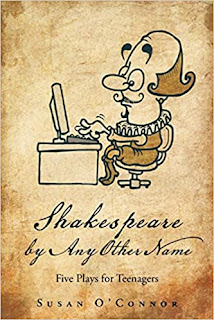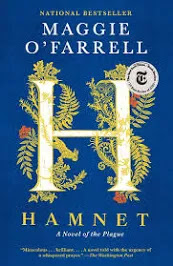Despite the fact that Christmastime is a celebration of the greatest gift, Christ's entrance into the world to save our souls and grant us eternal peace and tranquility, it is the one time of year that so many of us fall prey to anxiety and depression. As usual, these unhappy, debilitating feelings revolve around facing the truth about ourselves, the people around us, and the events that cause the kerfuffle. What often occurs, through a sort of self-protecting scheme, is avoidance of the truth. And we know where that ends up. This Christmas let us not bury those hard truths behind falsehoods. After all, the truth about Santa Claus was that he was actually a kind and generous man who attained sainthood. While that may not be our objective, a little more honesty wouldn't hurt.
Characters in stories, the written word as well as film, often express what they really mean between the lines, hiding the truth about what they would like to say but can't. Or won't. Writers love this technique called subtext. It adds layers of meaning to their characters, and the implied meanings can contribute significantly to the plot as well.
In Alice's Adventures in Wonderland, The March Hare teaches Alice about the importance of truth and clarity in her word. He insists that she should say what she means, and she replies:
Alice: I do, at least--at least I mean what I say--that's the same thing, you know.
March Hare: Not a bit!
The thing is, if characters in stories use subtext, the art of camouflaging what actually needs to be said, people in real life--that would be us, folks, do it all the time. We know the advantages of communicating clearly and truthfully, yet for one reason or another we avoid doing so, and this behavior results in serious issues within families, schools, and businesses--life in general. Since this blog is about the way we learn and use language to improve our lives, the battle between subtext and honest communication is the path we're going to follow. You won't have to look far to find examples in your favorite holiday movies.
In the romantic comedy The Holiday, the character Amanda Woods, an American who has left her romantic woes in Los Angeles and escaped to England for the holidays, falls in love with an English editor at a major publishing house in London. Afraid of her new feelings, she tells Graham as he takes her home from their outing, "You don't have to walk me in. It's freezing. I'm tired. I'm leaving in nine days and I'm not sure I can handle complicated." After getting out of one disappointing relationship back home, Amanda fears putting herself out there again and tries to make a run for it. Graham, on the other hand, isn't being honest either. In all of their conversations, he portrays himself as a single guy without a care in the world. Graham is actually a widower with two young daughters, as Amanda discovers later. A parallel romance occurs between Graham's sister who has escaped her own love disaster by running away to Los Angeles. The love disaster, Jasper Bloom, chases after her, but their conversation goes something like this, after he suggests that they sneak off to Venice for a few days:
Jasper: I don't want to lose you, babe.
Iris: Are you free to do that?
Jasper: Darlin', haven't I just traveled halfway around the world to see you? I wish you could accept how confused I am about all this.
Iris: Okay, let me translate that. You still are engaged to be married?
Jasper: Yes, but....
Iris: (She gets up.) Oh, this was a really close call. You were right. Very square peg, very round hole.
Earlier in the film, Iris's friend Arthur tells her the truth about herself. He says that in the movies, there's the best friend and the leading lady. He tells her she has to stop acting like the best friend who is being used and be the leading lady of her own life. Jasper, however, delivers the disguised message through subtext: Yes, I'm getting married but I'm so confused it doesn't matter. We can still be together. Iris finally sees beyond the subtext and ends the relationship. The film has a satisfying ending because, face it, it's a romantic Christmas comedy.
Next is A Castle for Christmas. Famous romance novelist Sophie Brown's latest book has displeased her readers by killing off a beloved character. The subtext here is that Sophie's husband has left her for another woman, and her bitterness gets its revenge through the destruction of the character Winston. Sophie leaves New York and escapes their wrath to a little village in Scotland where her father's family were once the grounds keepers of the castle Dun Dunbar. She quickly falls in love with Myles, the Duke of the estate, who quietly falls in love with her but believes his dukedom and castle define him. When his castle is entering foreclosure, Sophie buys it, adding injury to Myles' fragile ego. If he loses it to the woman he has fallen in love with, he believes he will lose himself, so he sabotages the relationship. Their last conversation must be riddled with insults directed at her to prevent her from knowing the truth about him. Again, a Christmas romantic comedy will come out clean in the end, and he decides he'd rather lose the castle than lose Sophie. All is well when the characters decide to have an honest discussion about how they really feel.
Another old favorite, The Winslow Boy, is set in early twentieth century England right before Christmas. Kate Winslow and Sir Robert Morton have opposing views about women's roles in society. As he defends her younger brother and wins the case against the Crown, their conversation goes like this:
Kate: Why do you take such great pains to prevent the truth about how you feel?
Sir Robert: Which of us knows the truth about himself?
Kate: Why are you ashamed of your emotions?
Sir Robert: Cold, clear logic wins the day.
Kate: Then why did you weep when the verdict was read?
Sir Robert: Very easy to do justice, hard to do right.
Sir Robert continues throughout the story as an enigma, hiding his feelings through the use of subtext until the idea comes to him that he may never see Kate again. As he leaves, they have words:
Sir Robert: I hope I shall see you again, in the House of Commons, up in the gallery.
Kate: Across the floor one day, but not up in the gallery.
Sir Robert: You still pursue your feminist activities. It's a pity. It's a lost cause.
Kate: How little you know about women.
Sir Robert: Do you really think so. How little you know about men.
He leaves, she grins, and the film ends with the audience assured this romance may be just getting started.
Our words matter. Truth matters.
Yes, we accept the subtext in these romantic comedies because we're confident they'll have a happy ending and the truth will out. If it doesn't, we leave it on the screen because "it's just fiction," but this is seldom what happens in real life. Our inability or lack of willingness to speak our minds and tell the people we care about how we feel leads to resentment and a break down of relationships. So, why don't we speak up and say what's on our hearts and minds?
Could it be that we don't want to risk speaking the truth because we fear what comes next? I'm no psychologist, but I do know none of us is a mind reader. We think we know each other well, but we actually have only touched the surface. The only way to communicate is to tell the truth in the best way we know how.
Our words reveal so much about us, and that can be uncomfortable. Yet honest, sincere, carefully chosen words can elevate both speaker and listener and improve the quality of our daily lives with the people we love. Our connections with them begin with language.
So the question is, why do we engage in such antisocial behavior? Why do we revert to subtext instead of being forthright and authentic, first with ourselves. Another possible answer might be that we value whatever filter we have acquired that enables us to speak in a more gentle and hospitable way. The straightforward truth, however, neither sugar coated nor cloaked in different apparel, is exactly what may be needed for situations that affect our emotional health.















































